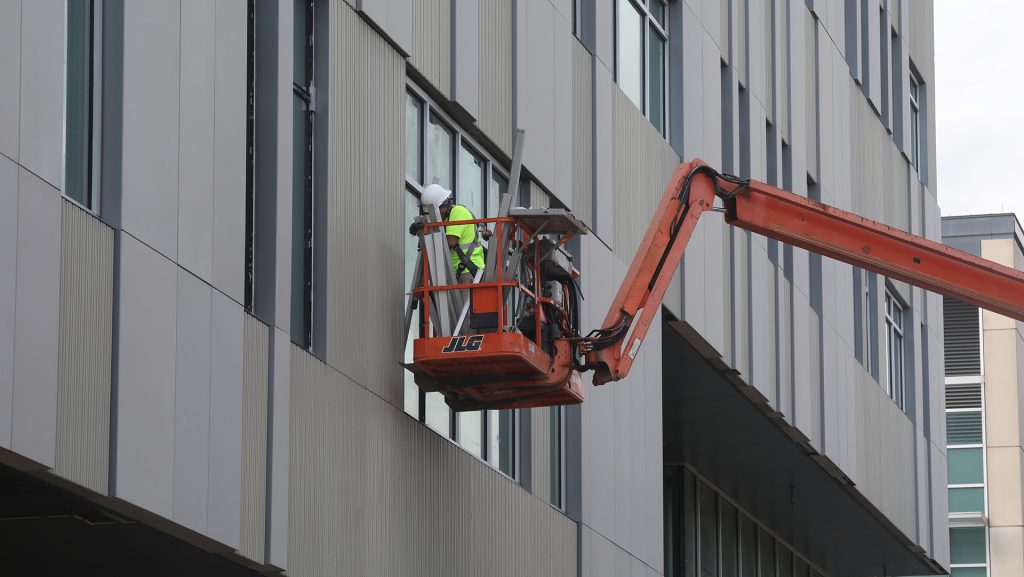To kick off National Engineers Week, Dean of Engineering Alec Scranton gave a tour of the University of Iowa’s brand-new annex at the Seamans Center.
To accommodate for growth in enrollment in the College of Engineering, 65,000 square feet of additional space has been created. Undergraduate enrollment has doubled since the last addition was completed (1,100 to more than 2,200), which pushed the UI to expand. The project cost around $35 million.
Throughout the building, the environment feels expansive because of the glass walls designed to bring in natural light.
The center piece, Scranton said, is a design studio with glass on all sides; it has specifically been built for hands-on work. The workspace is for both freshman and upper-level courses, which allows all students to engage with facility.
Scranton said these spontaneous spaces for students to work collaboratively are in part to enforce “the idea that engineering is a very creative discipline.”
Additionally, classrooms are built and designed with both flexibility and collaboration in mind.
Instead of a traditional classroom filled with individual desks, the average classroom in the annex has rows of long tables with groups of students seated at each table.
Using tables instead of desks is intended to allow students to easily group and work with one another during class, Scranton said.
Associate Professor of Mechanical and Industrial Engineering Albert Ratner said the new classrooms “make doing a mix of videos, slides, and questions a lot easier.”
At the Development Center, the idea of collaborative work was emphasized again. Students can come to this area to gain assistance in their coursework through student tutoring.
Advisers noted study-abroad programs, which allow students to work with, and learn from, students of all backgrounds.
“[Studying and doing research abroad] is a growing field for engineers,” said Anat Levtov, Director of Global Experiences and academic adviser for the engineering school.
In the Advanced Measurements Laboratory, students will have the opportunity to work with such facilities as wind tunnels, water channels, towing tanks, among other items.
The building also focuses on the importance of sustainability. At the top of the building, there are two bioswales that assist in slowing down storm water that comes off the building and filters it before it goes into the storm-sewer system.
The UI has installed monitoring in order to take measurements on pollutants in the water, which allows students to study the process.
Scranton said the building is essentially “using nature’s natural cleansing process with plants.”



